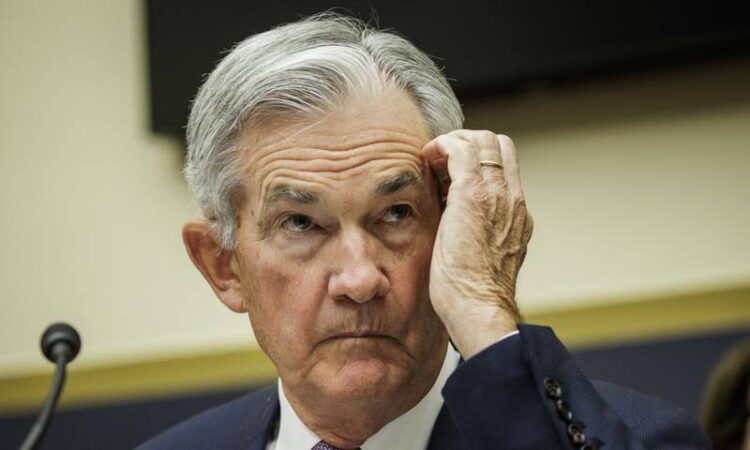
The US Federal Reserve faces a delicate balancing act when it meets next week to decide its monetary policy, as it considers the reverberations of further tightening to fight inflation against the backdrop of the Silicon Valley Bank collapse.
The Fed started raising interest rates this week last year. Many on Wall Street criticised it for acting too slow and playing catch-up with inflation, which was initially considered transitionary.
However, as inflation in the US surged to above 9 per cent last year, a 40-year high, and a similar scenario played out in Europe, the Fed became more aggressive and resorted to a series of 75 basis point and 50 bps increases in an effort to restore price stability, stoking fears and criticism that overtightening may increase the risk of a recession.
While inflation in the world’s largest economy has come down, it remains high, with the annual Consumer Price Index for January rising by 6.4 per cent, well above the Fed’s 2 per cent target rate.
The collapse of Silicon Valley Bank, the 16th largest US lender, and two other banks subsequently, as well as the potential contagion that American lenders face and the spillover effects globally, complicate the Fed’s monetary policy when it meets on March 21 and March 22.
Even after the US government moved in on Sunday and guaranteed a depositor bailout of SVB and Signature Bank, the banking crisis had already wiped off more than $465 billion from global markets, according to Bloomberg data.
“Markets will remain extremely febrile as anxiety widens over the stability of banks in the US, with high exposure to certain sectors, tech in particular,” said Edward Bell, a senior economist at Emirates NBD.
The two-year US Treasury yield fell to to 4.005 per cent, from 5.05 per cent in only three days, the biggest drop since the 1987 “Black Monday” stock market crash. It matched the fallout from the 9/11 attacks.
“Recent events are a stark reminder that normalising monetary policy after quantitative easing, as well as zero or even negative interest rates, is not an easy task for policymakers, especially central bankers,” said Yves Bonzon, Julius Baer’s group chief investment officer.
Investor and market expectations of what the Fed will do next are mixed.
Before the banking crisis, the wide belief was that the Fed would raise interest rates by 50 bps as it did in January, and that it would possibly start cutting rates in the second half of 2023.
The dynamics now are markedly different.
“This is not 2007/8. There is no credit bubble fuelling the economy,” said Paul Donovan, chief economist at UBS Global Wealth Management.
“However, weak pay bargaining power has made consumers, particularly low-income consumers, more dependent on credit. This has focused on the ‘unconscious’ credit of borrowing to pay weekly bills. Tighter lending standards may further constrain this group.
“The uncertainty around lending conditions may lead to speculation that the Fed could pause its policy tightening,” Mr Donovan said.
“Fed chair Powell’s relentless ‘hike, hike, hike’ approach to policy never stopped to consider the impact of past tightening. The uncertainty created by the June policy errors, and the failure to give a policy philosophy in the face of profit-led inflation added unnecessary risk to markets.”
Investment bank Morgan Stanley still expects a 50 bps rate increase while JP Morgan expects the Fed to raise rates by 25 bps.
Goldman Sachs and Barclays expect the Fed to pause its increases but Japan’s Nomura expects it to cut rates by 25 bps and consider ending its monetary tightening.
The US Consumer Price Index reading for February comes out on Tuesday and is expected to influence the next rate decision, which will be “key for the near-term trajectory for rates, market yields and currencies”, said Mr Bell.
Markets expectations are that inflation will slow to an annual 6 per cent.
“The Fed has clearly reached the limit of its ability to tighten without triggering a crisis that would force it to cut rates precipitously,” said Mr Bonzon.
Updated: March 14, 2023, 7:05 AM



